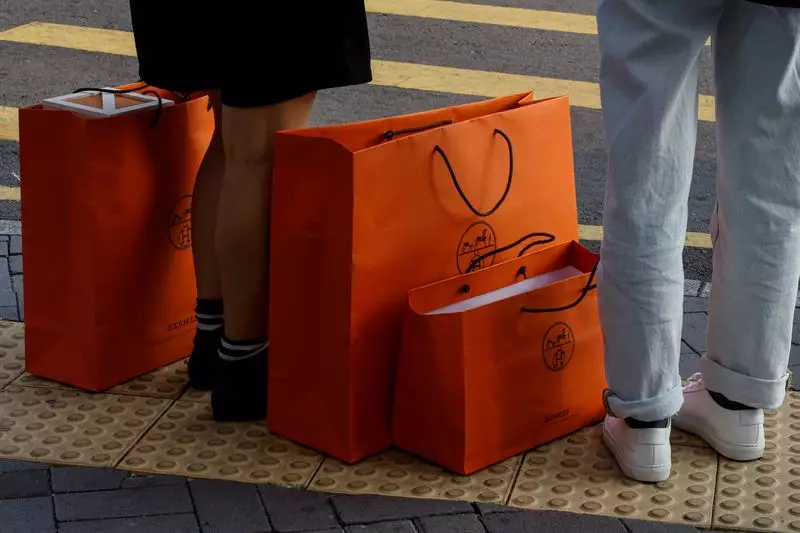Recent developments in the European Union’s trade policy have sparked concerns among investors regarding the potential ramifications on the luxury goods market. The decision to impose tariffs on electric vehicles (EVs) imported from China has led to speculation about possible retaliatory measures that could extend to high-end products such as Hermes handbags and Dior shoes. The overarching sentiment in financial circles suggests that, although a trade conflict looms, it is improbable that luxury goods will become the primary target of Beijing’s response.
Analysts like Patrice Nordey, CEO of Trajectry, assert that Beijing’s retaliation to the EU’s tariffs will likely steer clear of luxury items. This position stems from a broader understanding of China’s economic interests, wherein maintaining a healthy luxury market serves national revenue objectives. The luxury landscape in China is so integral to the nation’s economy that it would be illogical for the government to initiate a crackdown on high-end brands. Consequently, companies like LVMH and Kering saw a dip in share value as concerns arose; however, the structural factors at play suggest a more nuanced situation than mere fear of retaliation.
In prior conflicts, China has chosen to target sectors where it can leverage a firm economic response without jeopardizing its own consumer market, including agricultural products such as brandy and pork. This focus reflects a calculated approach, attempting to balance international relations and domestic economic stability.
The Chinese luxury market is projected to constitute 25% of the global total this year. Such a substantial figure highlights the stakes involved for both the EU and China as they navigate complex trade dynamics. Analysts like Jelena Sokolova emphasize that the response of European luxury shares to developments within China indicates a heightened sensitivity to these geopolitical tensions. The mere prospect of tariffs or increased taxes on imports can dramatically impact French luxury brands, given the expansive volume of European luxury goods sold in China — valued at approximately €11 billion in the previous year alone.
The economic logic here is straightforward: imposing tariffs on luxury goods could push Chinese consumers to seek their high-end purchases from abroad, thereby undermining local tax revenues. Given that much of the revenue generated from luxury sales contributes positively to China’s economy, the government has significant motivation to keep affluent consumers shopping domestically.
Albert Hu, an economics professor at the China Europe International Business School, adds another layer of complexity to the situation. He argues that neither the EU nor China is inclined toward a full-scale trade war, as both sides understand the risks involved. The nature of luxury goods — with their high price points and niche market — makes them difficult to justify as viable targets for retaliatory measures. The arguments necessary to substantiate claims of dumping luxury items, like $2,000 handbags, essentially falter under scrutiny.
The historical context of the relationship between China and the EU underscores a shared interest in preserving economic ties, whereby both parties stand to lose in the event of escalated hostilities. The current strain over tariffs on EVs represents a flashpoint but is unlikely to morph into an all-out trade conflict affecting the high-end market.
What seems to emerge from this discussion is a cautious path forward for both sides, leaning toward negotiation rather than confrontation. As highlighted by analysts, China’s past responses have been calculated and focused primarily on maximizing its economic interests while leaving room for diplomacy. Continuing the discourse rather than escalating tensions could potentially lead to compromises that benefit both EU luxury brands and Chinese consumers.
Navigating this intricate web of trade relationships requires foresight and adaptive strategies from luxury brands to mitigate risks stemming from international policy changes. Stakeholders must remain vigilant as they monitor the evolving dynamics between these two economic powerhouses, continually adjusting their strategies in response to new developments. The outlook may be challenging, but the resilience of luxury brands in the face of adversity remains a testament to their adaptability in ever-evolving global markets.


Leave a Reply